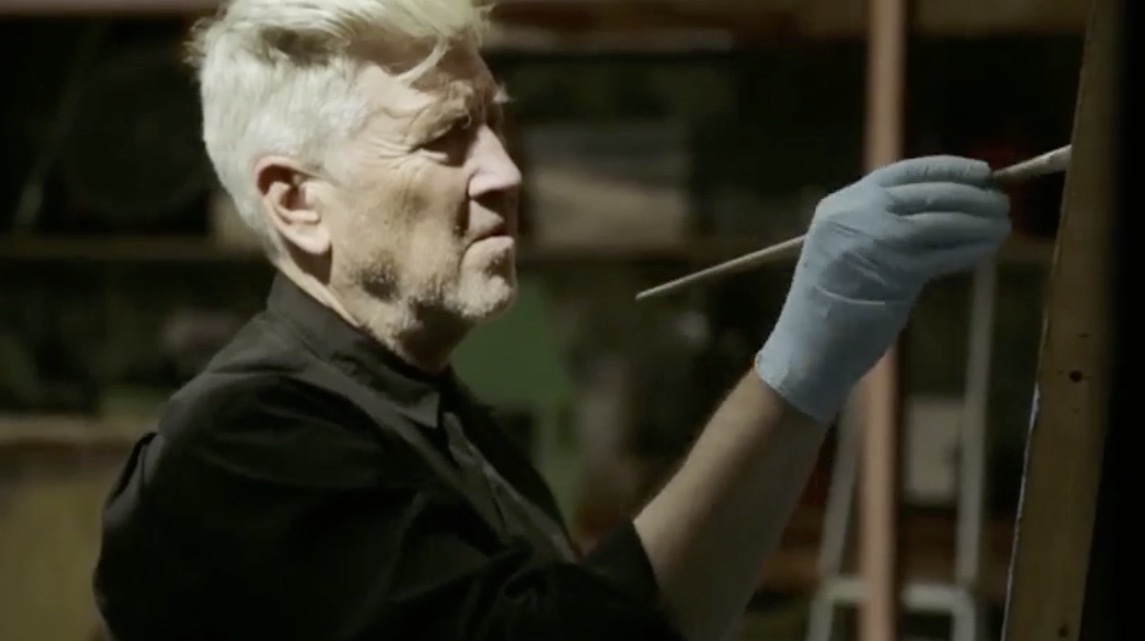Tuesday, 11 July 2017
The fires within: "David Lynch: The Art Life"
With the Twin Peaks continuation currently laying claim to being the audiovisual event of the year, its main creative force receives a welcome retrospective. The stimulating documentary David Lynch: The Art Life - a collaboration between the directors Jon Nguyen, Rick Barnes and Olivia Neergaard-Holm - concentrates on Lynch the mixed-media artist, joining this now white-haired figure at his studio high in the Hollywood Hills and inviting him, when he's not busy slapping gouache onto canvasses and tending to his toddling daughter Lula, to regale us with stories of his past and all those who've influenced him over the years. Between Lynch's paintings and video art, the screen soon fills with vivid textures. The filmmakers square the boy who revelled in playing with mud beneath the shadow of a tree in his native Missoula, Montana with the man we see moulding latex and pasting lube on croissants in his tool-lined workshop today; you wouldn't be surprised if Lynch personally turned the Log Lady's log or the key in Mulholland Dr on a lathe. (You also also wonder how much pleasure he derives from the non-tactile business of making television and cinema - unless he's one of those creatives who sees actors as modelling clay.)
Above all else, though, The Art Life is framed as a personal account of the creation of the Lynchian universe - hence the foregrounding of that voice, with its capacity to spin a yarn that automatically sets you to lean in. These ninety minutes are stuffed with the kind of offbeam stories that recur in the later films. One anecdote, about seeing a naked and bloodied woman staggering across suburban lawns, clearly anticipates Isabella Rossellini's Dorothy Vallens in Blue Velvet; an episode where Lynch confesses to falling asleep while driving seems likely to have fed into the white line fever of Wild at Heart, Lost Highway and others. Is this CV just a way of processing personal trauma, Lynch's attempt at straightening out his own story? (If so, then why are the movies still so eminently crooked and warped?) Clearly, the filmmaker is a product of his circumstances, and we're offered much here on the reconstruction of smalltown America in the years immediately following World War II - a process that seems to have involved many new buildings going up, and a lot of hands-on fun even before young David discovered the opposite sex - but our narrator and guide also has a way of making even the fondest of childhood memories sound like a campfire ghost story.
While the filmmakers very nearly equal their subject for craft, matching the Lynch-generated visuals with uncanny audio - birdsong, mechanical drone noise, ambient loops - of the kind that twangs the nerves in the features proper, not everything works: some of the footage of Lynch at the easel has been tinted to resemble that Super-8 footage that always shows up in docs showing Dali or Jackson Pollock in the studio, a hackneyed choice that distances us from material that should be inherently fascinating even to those who can't draw for toffee. And no-one behind the camera seems especially keen to press Lynch on what sound like pivotal life moments - like the divorce that fed into Eraserhead, brushed off here in the course of a single sentence. (It may be that, in this instance, the fathomless existential dread of the film speaks for itself.) Plenty of surprises, though - not least the emergence of an unexpected link between Lynch and the J. Geils Band - and the softly-softly interview approach does at least ensure that certain mysteries remain intact. At one point, Lynch breaks off from an anecdote he's telling about his childhood neighbour Mr. Smith with a rueful "I can't tell that story." A tale too much even for David Lynch? The mind truly boggles.
David Lynch: The Art Life opens in selected cinemas from Friday.
Subscribe to:
Post Comments (Atom)

No comments:
Post a Comment